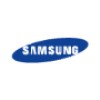
Beneficial Effects of Antenatal Magnesium Sulfate (BEAM Trial)
Cerebral PalsyIntraventricular Hemorrhage3 moreAs many more premature infants survive, the numbers of these infants with health problems increases. The rate of cerebral palsy (CP) in extremely premature infants is approximately 20%. Magnesium sulfate, the most commonly used drug in the US to stop premature labor, may prevent CP. This trial tests whether magnesium sulfate given to a woman in labor with a premature fetus (24 to 31 weeks out of 40) will reduce the rate of death or moderate to severe CP in the children at 2 years. The children receive ultrasounds of their brains as infants and attend three follow-up visits over two years to assess their health and development.

Constraint-induced Movement Therapy and Hand Arm Bimanual Training in Children With Hemiplegic Cerebral...
Cerebral PalsyHand FunctionThe combination of the constraint-induced movement therapy (CIMT) method as a complement to hand arm bimanual training (HABIT) will improve the frequency and quality of cooperative hand use and function in children with hemiplegic CP.

Potential Benefits of Home Based Exercise Programs in the Management of Spastic Cerebral Palsy
Cerebral PalsySpastic1 moreThe study will be conducted to see the potential benefits of home based exercise program comprising routine physical therapy and traditional massage in the management of spastic cerebral palsy (CP). It will be a randomized controlled trial having two groups, RPT group and Massage group. Both groups will be provided with routine physical therapy treatment comprising stretching of spastic muscles, strengthening of weak muscles, positioning and posturing strategies. Massage group will also receive traditional massage in addition to routine physical therapy. Parents/Caregivers will be trained to perform routine physical therapy and traditional massage at home. Data will collected using a structured questionnaire, Modified Ashworth Scale (MAS), Gross Motor Function Measure (GMFM),Gross Motor Function Classification System (GMFCS) and CP Child's Caregiver Priorities & Child Health Index of Life with Disabilities at baseline, after 6th and 12th weeks of intervention.

A Comparative Analysis on Physical Activity Performance and Motor Function of Affected Upper Extremity...
Hemiplegic Cerebral Palsy With Spasticity (Diagnosis)This study evaluates CIMT(Constraint Induced Movement Therapy) in the treatment of physical activity performance and motor function of the weaker extremity in young children with cerebral palsy. Half of participants will receive CIMT while the other half will receive no treatment.

enGIneering For sporT for All
Cerebral Palsyhemiplegia is a pathological condition that affects one side of the body which is associated with difficulty in maintaining an upright posture and walking and which is commonly compensated for by using orthoses (AFO). However, the orthoses are inadequate for sports from a design and prescription point of view, which specifies that the goal of the orthosis is to support walking and that any other use compromises its reliability. The main objective therefore provides for an improvement in the involvement of these children in sports activities (both at school and during leisure time) through the development of new generation orthoses.

Magnesium Sulphate for Preterm Birth (MASP Study)
Cerebral PalsyThe purpose of the study is to assess whether magnesium sulphate for women at risk of preterm birth can protect their children against cerebral palsy. The results from this randomised controlled trial will be added to the previous meta-analysis to obtain firm evidence for magnesium sulphate as a neuroprotector, and determine whether it should be used as standard therapy for women in preterm birth.

Effect of Protein Composition on Gastric Emptying
Cerebral PalsyGastric Dysmotility1 moreThe protein composition of nutrition may affect the rate of gastric emptying and gastric fysiology. This is espesially important in children with neurologic impariment, who commonly rely on tube feedings, have feeding problems, nausea, vomiting, gastroesophageal reflux and delayed gastric emptying. We aim to find out whether 4 different protein sources affect the rate of gastric emptying and electrofysiology in this group of children.

Effectiveness of Visual and Auditory Feedback on Eye-hand Coordination in Children With Hemiplegic...
Hemiplegic Cerebral PalsyThe aim of this study was to investigate potential benefits of adding augmented biofeedback training to standard therapy in improving eye-hand coordination in children with hemiplegic cerebral palsy .Participants were divided randomly into three equal groups. Group (A) received specially designed program of physical therapy intervention strategies to facilitate visual motor integration and visual perception over a period of three months. Group (B) received augmented biofeedback training only, and group (C) received augmented biofeedback training and same physical therapy program as group (A).

Clinical Utility of Pediatric Whole Exome Sequencing
EncephalopathyBirth Defect8 moreThe investigator aims to examine the clinical utility of WES, including assessment of a variety of clinical outcomes in undiagnosed pediatric cases.

Shock Wave and Spastic Cerebral Palsy Equines Foot
Cerebral PalsyA double-blind randomized controlled study was carried out on 34 children (19 boys and 15 girls) in the age ranged from 7 to 9 years old with spastic hemiplegia were randomly allocated to one of two groups: control or study group. The two groups received traditional therapeutic exercises for 12 weeks. Additionally, study group received rESW (one session/week) on gastrocnemius and soleus muscles (1500 shots/muscle, frequency of 4Hz, energy of 0.030 mJ/mm2). All children were evaluated at baseline, and after 12 weeks by Modified Ashworth Scale, Biodex system 4 isokinetic dynamometer, Gross Motor Function Measure (GMFM-88), dimensions "D" standing and "E" walking, Trost Selective Motor Control Test, and Single Leg Standing Test.
